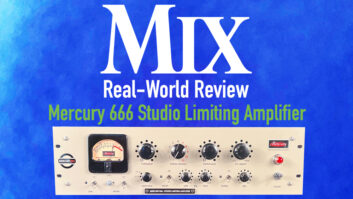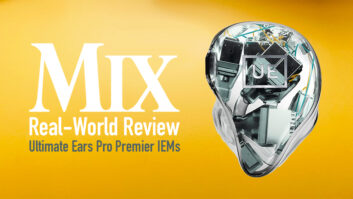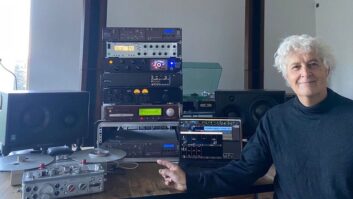There’s a scene in the movie Sideways where the Paul Giamatti character, sidled up to the wine bar with his buddy, is discussing the release of a special reserve with the pourer (Sandra Oh). It’s supposed to be a fabulous wine, but Giamatti can’t help himself — finds it too young, hasn’t filled out yet, etc. The pourer agrees, and they start breaking it down, at which point, the buddy (Thomas Haden Church) pipes in, with a big smile, “Tastes good to me!”
Now, if we think of Giamatti as the veteran engineer, the one who won’t accept mediocrity no matter what label it peeks out from, and we think of Haden Church as the typical music consumer, we begin to see just where the audio industry resides in 2005. We are at a crossroads, where the capability for producing and delivering music at incredible fidelity, in full-blown surround, has finally arrived, and yet the consumer overwhelmingly has declared that compressed formats “sound good to me.”
These two streams do not need to be in conflict. No engineer working in 24-bit, 96k is going to dumb-down a mix based on a popular release format (i.e., downloads). That would be a wholly unnecessary compromise. And no consumer, perfectly content with the portability and convenience of an iPod, is going to have an arm twisted and plunk down cash for an SACD if that’s not what they want. Again, not necessary. Low fidelity and high fidelity can co-exist as they always have.
The same can be said for other areas of the professional production industry. The decades-old argument of analog vs. digital has now morphed into a debate over professional vs. prosumer. Or features vs. performance. Or, well, I guess we do still talk about analog vs. digital. But the point is, as we find professional audio manufacturers making their way into Best Buy, and as processing power inside and outside the computer expands exponentially, can we continue to use price or features or (gasp!) whether a record was recorded in a project or commercial facility as an arbiter of quality?
Quality, no matter what Phaedrus may have been searching for in Zen and the Art of Motorcycle Maintenance, is not an absolute. Yes, we can be somewhat objective and note that a vintage Neumann, reconditioned to perfection, sounds better than a Radio Shack lavalier. But if a $99 Casio keyboard sound makes it onto a hit record and the tone is right for the song, who cares that it wasn’t a B3?
In putting together this special issue of Mix, the only assumptions we made, in answering our own question, was that all 50,000 readers care about quality. They may not agree on what it is, but they all tend to “know it when they hear it,” whether in a new product offering or a hit song. And in our approach, we made no judgments on price or features or fidelity or budgets. As Stephen St. Croix points out in his “Fast Lane” column, a crappy, noise-filled Billie Holiday number can still bury any number of hit singles released in the highest of high fidelity.
So if you find yourself next to Thomas Haden Church at the wine bar, and he’s asking for a taste of the screw-top, by all means, raise a glass and say, “Good for you.” Then reach for the private reserve.







